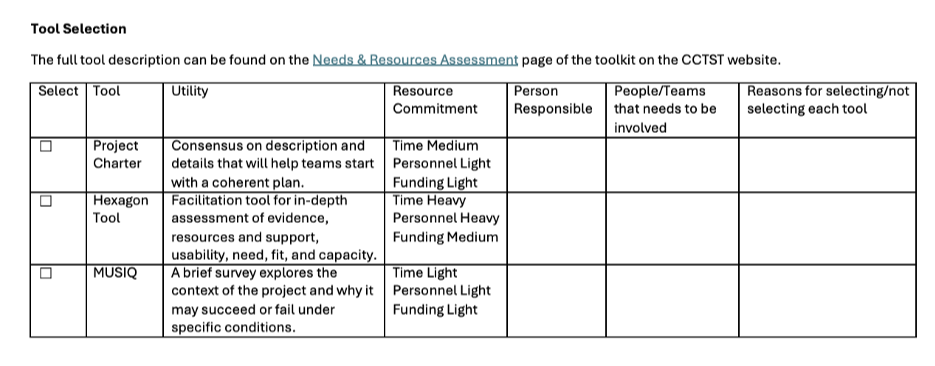Featured Resource: Quality Implementation Toolkit
3-min read
What is the Quality Implementation Toolkit?
The Quality Implementation Toolkit is a comprehensive resource for implementing evidence-based interventions and practices. It is designed around the Quality Implementation Framework (QIF) and intended to support teams at their current stages and provide practical tools for ensuring implementation and sustainability. The framework and toolkit provide guidance on how to implement evidence-based programs and practices, and they are broken down into implementation process steps.
Four Phases of the Quality Implementation Framework (QIF)
The QIF is one of the most commonly used implementation process models – it outlines the steps and stages to plan for implementation. The QIF consists of four phases and 14 action-oriented steps.
Phase 1: Initial Considerations Regarding the Host Setting
Phase 2: Creating a Structure for Implementation
Phase 3: Ongoing Structure Once Implementation Begins
Phase 4: Improving Future Applications
The steps of the QIF often resonate with implementation practitioners. It’s a very accessible implementation planning tool that feels like an implementation roadmap. Unfortunately, to date, there has been little additional guidance on how to apply the QIF.
The Quality Implementation Framework: A Synthesis of Critical Steps in the Implementation Process: https://pubmed.ncbi.nlm.nih.gov/22644083/
Practical Tools to Support Every Stage of Implementation
Implementation teams are not intended to use every tool within the toolkit for every initiative. But rather, they are encouraged to engage in a facilitated selection process to determine where they are at in the implementation process, what their current needs and capacities are, and what tools are most appropriate to meet those needs. The checklist can be used to guide the team on the purpose of each tool so that you can make informed decisions about its utility for your initiative.
How to Use the Tool Selection Checklist
A tool selection checklist is provided to help teams select the appropriate tools. The checklist provides a guided set of questions to help them identify and analyze whether a particular tool is relevant to the project.
After identifying and analyzing their needs, teams will find a tool selection table that lists the name, utility, and resource commitment, and leaves open spaces for teams to fill in the person responsible, the people/teams that need to be involved, and the reasons for selecting/ not selecting each tool.
Why Facilitation Matters for Successful Implementation
This toolkit doesn’t provide the answers, but guidance on possible tools and resources that you can use to address different implementation challenges, depending on where you are at in the implementation process.
Therefore, it’s important to know that the checklist is designed to be used by a trained implementation scientist or specialist who can guide the team through the questions and facilitate a discussion about the most important tools for their context. This tool isn’t for beginners; it’s for those with training and experience in implementation science or supporting implementation. Learn more about applying the QIF and being trained in implementation science in our Level 1 Implementation Support Certificate.
Where to start: Watch the Quality Implementation Toolkit Overview Video
Before diving in, we recommend watching the provided overview video of the toolkit. This video provides a great overview of the features and elements of the toolkit. There is a lot of information in the toolkit, and this video can help make that less overwhelming.
Ready to enhance your implementation planning process? Check out the Quality Implementation Toolkit.
This article was featured in our monthly Implementation in Action bulletin! Want to receive our next issue? Subscribe here.



